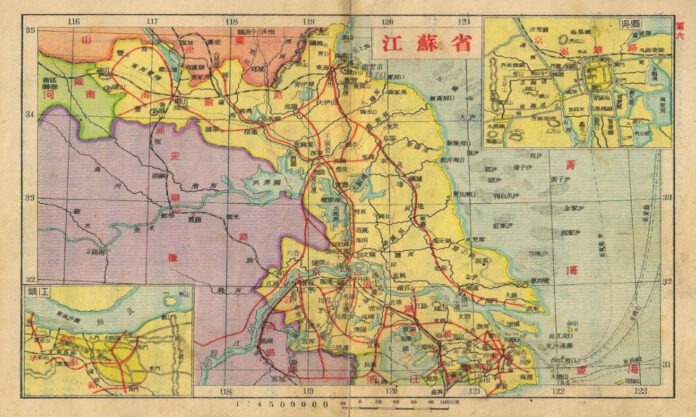Nanjing, the capital of numerous ancient dynasties and even the nation itself previously, is also capital of Jiangsu Province. But it hasn’t always been that way. The factors at play? War, peace, dynastic politics, provincial demarcations and simple old optics.
Jiangsu, by some measures the wealthiest province in China, with a GDP exceeding some moderately-developed countries and the size of South Korea, has at present, 13 prefecture-level cities under its jurisdiction. Nanjing has been its capital since, most recently, 1953.
That we now know as Jiangsu dates back to 1666 when the area then named Nanzhili was split into Jiangsu and Anhui by the Qing Dynasty government. There followed a long period marked by a pattern of dual capital coexistence, with the new Jiangnan Province having Suzhou Prefecture and Jiangning Prefecture for capitals, the latter being today’s Nanjing.
Fast forward to 1912, after the demise of the Qing Dynasty, when a new round of debate broke out regarding the capital’s location. It was argued that while Suzhou had a developed economy, its geographical location is too far east, making it not conducive for taking account og both the north and south of the Yangtze River. Meanwhile, Nanjing was thought to be more suitable, both in terms of its regional geographical location and the convenient conditions offered by the Yangtze River waterway. Hence, the capital of Jiangsu came to be established in Nanjing.
As the Yangtze Evening News reports, in 1928, the status of Nanjing was further improved, with the City becoming a municipality under the central government of the time (much like Beijing, Chongqing, Shanghai and Tianjin today). But that presented the conundrum that a municipality cannot be the capital of a province since it enjoys a status on the par of a province itself.
Jiangsu Province repeatedly weighed the three cities of Yangzhou, Suzhou and Zhenjiang, and finally settled on Zhenjiang for its convenience in being located at the crossroads of the three major trunk lines of the Jiangsu Provincial Railway, as well as the Yangtze River and Grand Canal. Hence, Zhenjiang became capital of Jiangsu in July of 1928.
Yet Zhenjiang’s tenure as capital lasted only about 10 years. With the outbreak of war with Japan in 1937, so the Jiangsu Provincial Government found itself having to uproot to many places in Jiangsu and even Anhui Province.
Specifically, those would be Jiangdu County (Yangzhou City) in November, 1937; Huaiyin County (Huai’an City) in December, 1937; Xinghua County (Taizhou City) in 1939; Cheqiao of Huai’an County (Huai’an City) in April, 1941; Taihe County of Anhui Province in October, 1941; and Lizhai in Fuyang County of Anhui Province in 1944.
Each of the six can be regarded as temporary capitals of Jiangsu Province, with that holding the title the longest lasting about 3 years and the shortest only 1 month. With victory in the Second World War against Japan in 1945, the Provincial Government moved back to Zhenjiang in September of that year, with the City reclaiming its status as Provincial Capital.
Jiangsu has therefore had as many as nine capitals throughout its history, but only Nanjing, Suzhou and Zhenjiang are considered genuine. The final change which would restore Nanjing as capital came in February, 1953.









